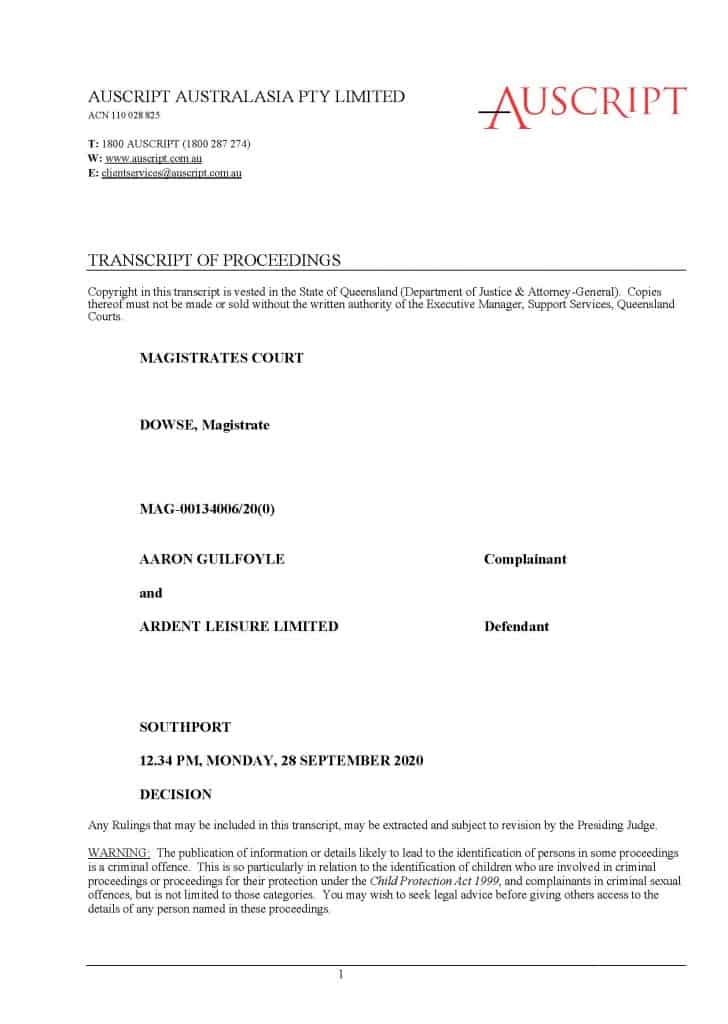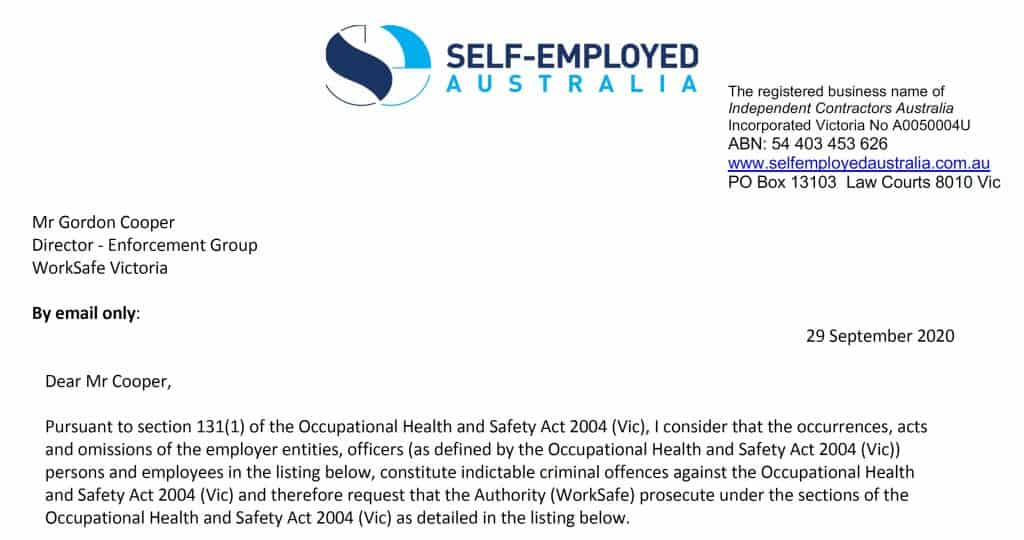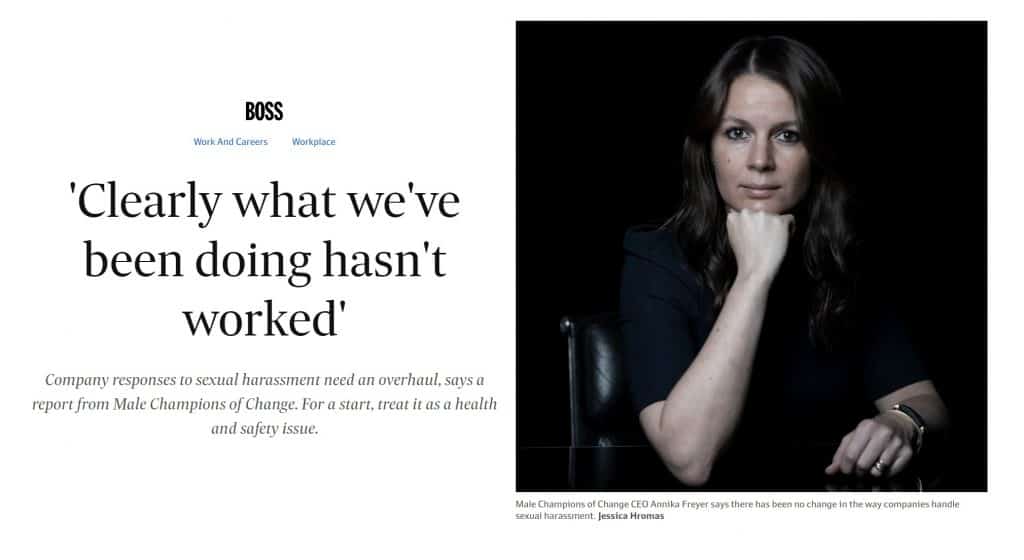Australia has a process of accountability where Ministers and Heads of Government Departments and Authorities are required to answer attend Senate Estimates. Few people outside of the Canberra bureaucracy pay much attention to the occupational health and safety (OHS) information provided. Most media pay attention to disputes and statements that have a more general political appeal, but there is important information about workplace health and safety, such as an update of the progress on Marie Boland’s recommendations or the role and activity of Safe Work Australia (SWA).
Category: executives
What the judge said about Dreamworld, other than the penalty

Some readers raised eyebrows on the article titled “No lessons in the Dreamworld penalty” but the point was that the occupational health and safety (OHS) due diligence and governance lessons were there months ago following the Coroner’s damning findings.
Most of the media’s attention has been on the record size of the financial penalty but looking at Judge Dowse’s decision in the case provides a better understanding of that penalty, the breaches of the safety legislation and the opinions of the judge.
OHS prosecution request over COVID19 sent to WorkSafe

The Australian newspaper is notoriously supportive of the conservative side of Australian politics, so it is little surprise that one of its business journalists, Robert Gottliebsen, is maintaining his advocacy for Industrial Manslaughter and occupational health and safety (OHS) prosecutions over COVID19-related infections, echoing many of the desires of Ken Phillips, the head of Self-Employed Australian and Independent Contractors Australia.
Phillips wrote to WorkSafe Victoria on September 9, 2020 demanding a prosecution by WorkSafe Victoria of a swathe of Victorian government Ministers, public servants, police, as well as
“All members of the management team known as the State Control Centre………….”!
Industrial Manslaughter frenzy

The pursuit of Premier Dan Andrews and the Victorian Government for Industrial Manslaughter reached a frenzy in Parliament on September 4 2020, when Liberal Parliamentarian Tim Smith expressed his opposition to the extension of Victoria’s state of emergency. His florid speech masked his principal, and admirable, aim, to hold the Government accountable.
The failure of Leadership on sexual harassment

If prominent Australian lawyer, Josh Bornstein does not like something, it’s worth looking more closely at it. Last week on Twitter, Bornstein scoffed at the suggestion that occupational health and safety (OHS) could be a new approach to preventing sexual harassment in the workplace. He tweeted:
“To all those clamouring to support the idea that sexual harassment should be treated as an OHS issue, I have a simple message: Wrong Way, Go Back”
The OHS and sexual harassment nexus appeared primarily in response to a couple of articles (paywalled) in the Australian Financial Review (AFR) based on a leaked report from the Male Champions for Change (MCOC) organisation. Although the report is not publicly released for another couple of weeks, MCOC (hopefully not pronounced My Cock), proposes consideration of applying OHS laws and principles to sexual harassment.
The full report is likely to discuss the mechanics of this further but the advocacy of OHS is less interesting that the admission that MCOC and other leadership-based approaches to reduction and prevention of workplace sexual harassment have failed.
Responsibility and its denial

Occupational health and safety (OHS) laws are intended to clarify who is responsible for workplace health and safety and to assist those responsible to fulfil their OHS duties. But responsibility is hardly ever discussed in reality except after an incident. A core question at that time is “Who was responsible?”, with the social subtext being “It wasn’t me.” OHS laws have already established broad OHS responsibilities which we accept when we have to, but deny when we don’t.
Clear, defined roles and responsibility are core to our understanding of workplace health and safety and the establishment of a safe and healthy workplace, and also of corporate integrity and productivity.
Ardent Leisure charged with safety breaches
The big occupational health and safety (OHS) news in Australia on 21 July 2020 was the prosecution of Dreamworld‘s parent company, Ardent Leisure, for breaches of the Work Health and Safety legislation over the deaths of four customers who were riding the Thunder River Rapids Ride four years ago. The prosecution has been expected for some time and is likely to take many months. More details will emerge as they did in the Coronial Inquest that slammed Dreamworld’s safety reputation.
In this article, I look specifically at the statement that Ardent Leisure sent to the Australian Stock Exchange (ASX) as it is in an interesting example of mea culpa, OHS under-investment and damage control.


